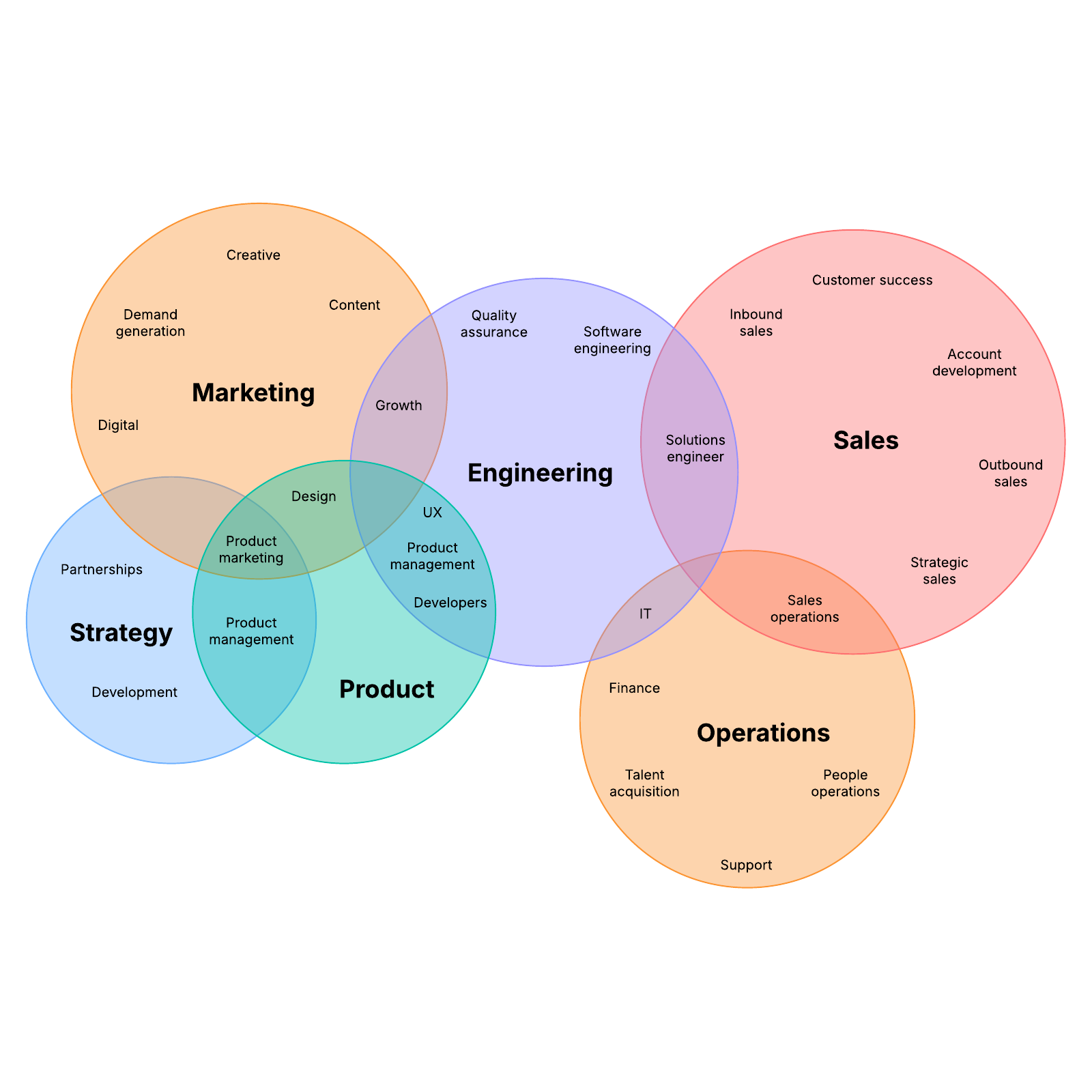Every organization, regardless of size, operates with a departmental structure designed to streamline roles, responsibilities, and collaboration. Understanding how these departments align and overlap is critical to fostering efficient workflows and achieving strategic goals.
This article outlines the core functions of key departments, highlights their interdependencies, and provides a structured framework for understanding how they work together.
Departmental Architecture Overview
The table below showcases the primary responsibilities of key departments, the overlaps between them, and how these intersections create value for the organization.
| Department | Primary Responsibilities | Key Overlaps |
|---|---|---|
| Marketing | – Demand generation – Content creation – Digital marketing – Campaign management |
– Product (for product marketing) – Strategy (for partnerships) – Sales (for lead handoffs) |
| Sales | – Inbound and outbound sales – Strategic sales planning – Customer success handoffs – Revenue generation |
– Operations (for sales processes) – Marketing (for leads) – Product (for feature positioning) |
| Engineering | – Software development – Quality assurance – Platform scalability – Technical innovation |
– Product (for feature development) – Operations (for IT support) – Strategy (for technical goals) |
| Product | – UX and design – Product roadmap – Feature prioritization – Developer coordination |
– Engineering (for implementation) – Marketing (for product messaging) – Sales (for product fit) |
| Operations | – Talent acquisition – People operations – Financial planning – Support and infrastructure |
– Sales (for operations processes) – Engineering (for IT) – Governance (for compliance) |
| Strategy | – Market research – Partnership development – Long-term planning – Business growth initiatives |
– Marketing (for campaigns) – Product (for roadmap alignment) – Operations (for scalability) |
How Departments Work Together
Effective collaboration between departments is the backbone of operational success. The overlaps between responsibilities create opportunities for innovation, enhanced efficiency, and shared ownership of goals. For example:
- Marketing & Sales: Seamless communication ensures leads generated by marketing are effectively nurtured by sales, driving conversions.
- Product & Engineering: Close collaboration ensures product features are designed with technical feasibility and user experience in mind.
- Strategy & Operations: Strategic planning benefits from operational insights, enabling scalable growth initiatives.
Conclusion
Understanding departmental architecture is essential for fostering alignment and collaboration across teams. By recognizing the primary responsibilities and overlaps between departments, organizations can create a unified approach to achieving their goals. Regardless of your team size, embracing this interconnected view will help your organization operate more effectively.
